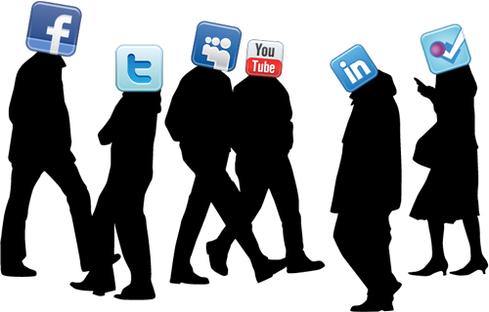How CIOs Can Help Build A Millennial Enterprise
Here are a few ways: Build an enterprise app store, gamify your company, and support as much consumer tech as possible.

It's tough being a CIO today. There are pressures from all corners to run, expand, and transform the business. CIOs have hunkered down in a position of protectionism for many years. They have struggled to embrace the millennial era of computing and provide their employees and customers with the applications and tools they need to really compete.
[ Looking to hire millennials? See How To Attract Young Talent: 10 Tips. ]
For instance, in dealing with the BYOD movement, many CIOs are still fighting the notion of letting employees integrate their devices into the corporate IT infrastructure. This is creating a big divide between the CIOs and employees who long for the same productivity and connection in their work lives that they get from their personal lives. The future expectations of a CIO may very well be in becoming a mobility architect or mobility integration specialist as he or she looks to merge these services with deployable enterprise applications.
Another key movement facing CIOs is the emergence of the cloud to add cost-effective virtualization and on-demand computing power to corporate infrastructures. IT groups fixated on locking down the desktop to force standardization are in for a big surprise -- these common services are now becoming available inside a simple web browser. This movement will evolve further as the cloud becomes more personal and younger employees use public and private third-party cloud services such as Dropbox and Google Drive for information sharing; Evernote, Google Docs, or Microsoft Office 360 for office productivity; and Skype for primary communications. Facing a bring-your-own-cloud movement, IT organizations will have to piece together enterprise and consumer software both in the cloud and on the premises to get the job done.
The bottom line is that many CIOs are not prepared to serve their newest constituents -- the millennial generation. So how can you avoid having your CIO job title turn into a self-fulfilling prophecy of "Career Is Over"?
Become a customer-centric organization
The first step is to partner with your key customers and stakeholders to understand their goals. The CIO's goal should be to become a partner who can advise on how to use IT to deliver and accelerate business goals. The key trait here is less about being a technologist and more about collaborating with people. Merging social and collaboration tools like Jive and Yammer with traditional methods like email and in-person meetings will allow more free-form discussions between business and IT. Using crowdsourcing tools to communicate with customers is another way to generate out-of-the-box ideas.
Prepare your infrastructure
Instead of fighting the adoption of consumer-based technologies such as video collaboration through Skype, document sharing through Dropbox, and social collaboration through Yammer, prepare your corporate IT infrastructure to support these new paradigms. You'll need to prepare your network in terms of bandwidth, wireless, quality of service, and security.
Deliver through an enterprise app store
Much as consumers flock to places like the Apple App Store and Google Play for apps that automate and simplify their personal lives, the employee app experience should have similar benefits. IT organizations should provide employees with applications for expense management, purchasing, HR functions, and customer interactions.
Become the chief innovation officer
CIOs who remain focused solely on infrastructures and platforms without pushing for innovation are doomed. One way to take action is to create separate groups for experimenting with new technologies. My company, Virtusa, is seeing many organizations develop separate innovation labs for integrating new technologies into the mainstream IT apps. For example, some financial services companies are creating public-facing sites that let consumers try new features such as mobile deposits and mobile text banking.
Embrace mobility and the cloud
The future CIO needs to become an orchestrator and integrator of mobile, cloud, and analytics tools. For example, mobile platforms and devices have destroyed constraints on physical location, so providing mobile integration with core business applications is critical. Also, through the use of cloud services, CIOs can increase the scale and speed of business operations.
Integrate systems of record with systems of engagement
To keep millennial employees engaged, it's critical that your transactional systems (i.e., ERP and other back-office systems) and your engagement systems (i.e, social Intranets, email, and other collaboration tools) be tightly aligned. Make sure that your backend systems are ready to handle data from mobile devices and social networks, such as video, voice, social, and sensory data. An example of this is migrating legacy back-office HR systems to modern cloud-based HR systems like Workday.
Gamify your enterprise
Gamification is much more than bringing Angry Birds to the enterprise. Applying the principles of game design can motivate employees (i.e., players) to become better at their jobs. For instance, Virtusa is helping organizations apply gamification techniques to improve productivity and quality of service in the call center.
Create an intelligent organization
Deploying analytics tools in your company can improve your ability to make real-time business decisions. Though this may be obvious, many organizations report that they still lack insights about data, despite a vast increase in the amount of data they are collecting and storing.
There's no single migration path to the next generation of enterprise communications and collaboration systems and services, and Enterprise Connect delivers what you need to evaluate all the options. Register today and learn about the full range of platforms, services, and applications that comprise modern communications and collaboration systems. Register with code MPIWK and save $200 on the entire event and Tuesday-Thursday conference passes or for a Free Expo pass. It happens in Orlando, Fla., March 17-19, 2014.
About the Author(s)
You May Also Like
How to Amplify DevOps with DevSecOps
May 22, 2024Generative AI: Use Cases and Risks in 2024
May 29, 2024Smart Service Management
June 4, 2024







